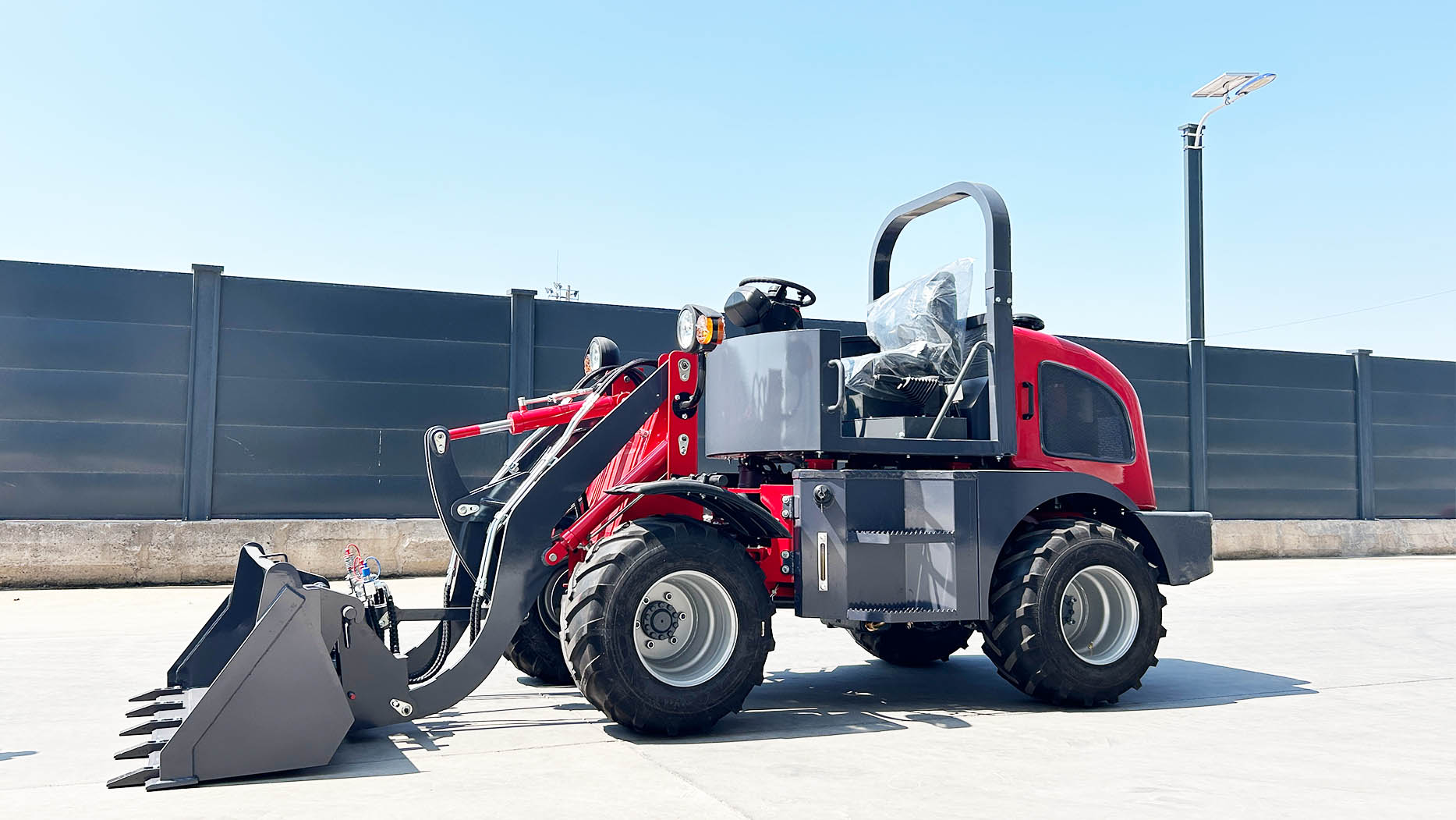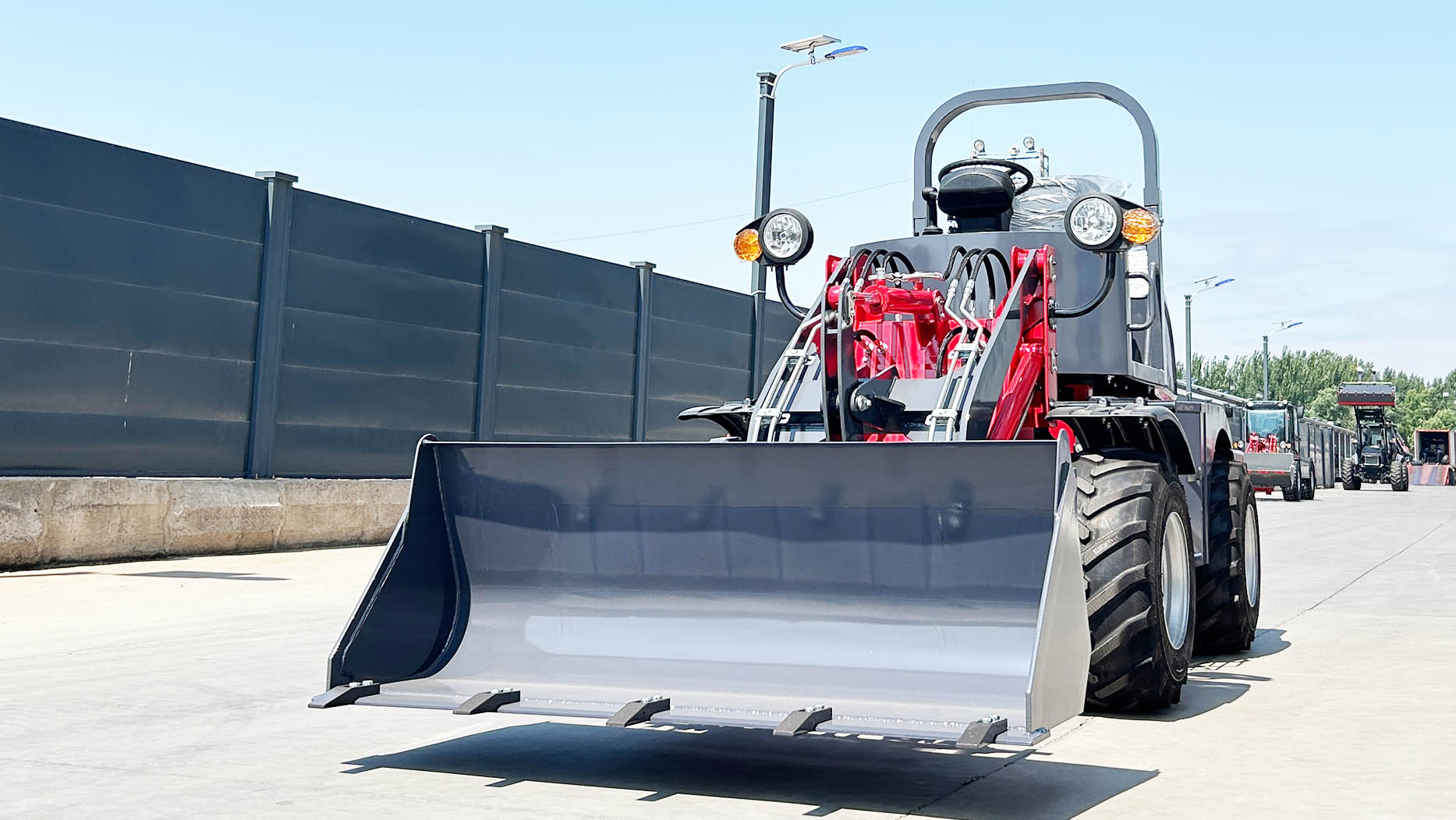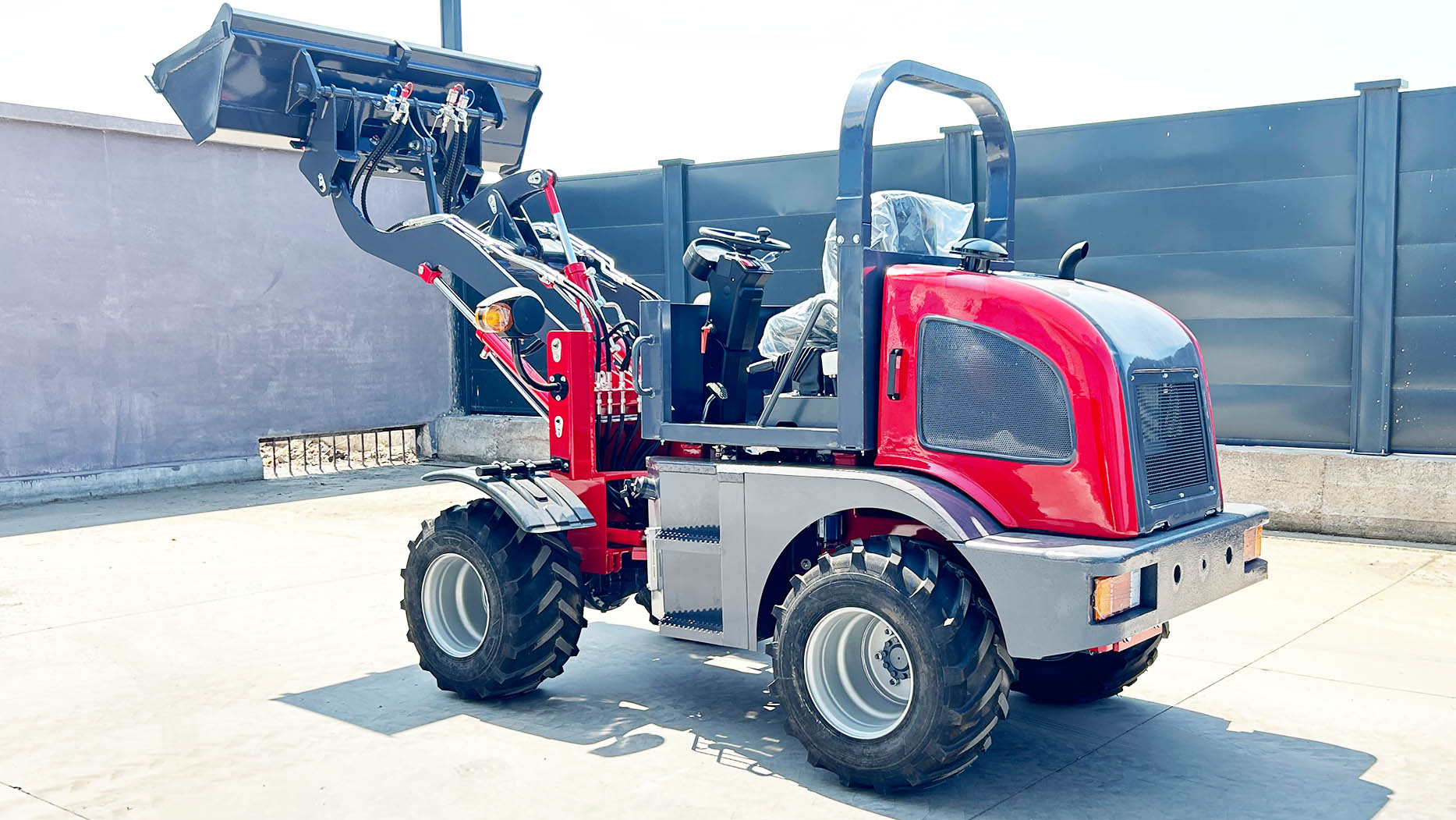The wheel loader is a cornerstone of productivity across a vast array of industries, recognized universally for its large front-mounted bucket and its unparalleled ability to scoop, lift, and transport bulk materials with speed and efficiency. From the foundational stages of construction to the continuous demands of mining, agriculture, and waste management, these powerful machines are indispensable workhorses. Understanding the diverse uses and applications of wheel loaders is key for any business looking to optimize its material handling processes and enhance operational efficiency.
Often seen as the primary loading tool, a wheel loader is far more versatile than simply moving dirt. Its adaptability, fueled by a range of sizes and attachments, allows it to perform a multitude of tasks that are critical to the smooth operation of countless job sites and facilities worldwide.
Core Functions and Primary Applications of Wheel Loaders
At their heart, wheel loaders are designed for the efficient movement of loose materials. This core function branches out into numerous specific applications across various sectors.
1. Construction and Infrastructure Development
This is perhaps the most common and visible application for wheel loaders. They are fundamental to almost every phase of a construction project.
Site Preparation: Moving large volumes of soil, sand, gravel, and debris to clear and level ground for new construction.
Material Loading: Loading aggregates (sand, gravel, crushed stone) into dump trucks to be transported off-site or to different areas of the construction site. This is a continuous, high-volume task where the speed and capacity of a wheel loader are critical.
Backfilling Trenches: Using the bucket to push soil back into excavated trenches for utilities, pipelines, or foundations.
Road Building: Loading base materials for roads, and sometimes used for spreading and leveling.
Demolition Cleanup: Clearing and loading rubble, concrete, and other debris after demolition work.
On-Site Material Distribution: Transporting materials from stockpiles to mixers, crushers, or other processing equipment.

2. Mining and Quarrying
In these heavy-duty environments, wheel loaders operate under extreme conditions, moving vast quantities of raw materials.
Haul Truck Loading: Rapidly loading ore, crushed rock, coal, or other excavated materials into large haul trucks for transport out of the mine or quarry. This requires high-capacity loaders with immense breakout force and robust construction.
Stockpile Management: Creating, organizing, and maintaining massive stockpiles of materials.
Primary Feeders: Feeding crushers and processing plants with raw material on a continuous basis.
Site Maintenance: Clearing debris and maintaining access roads within the mine or quarry. Wheel loader diesel engines are preferred here for their power and durability.
3. Waste Management and Recycling
The ability to handle large, often unconventional, and sometimes hazardous materials makes wheel loaders ideal for waste facilities.
Waste Handling: Pushing, piling, and loading municipal solid waste (MSW) or industrial waste at landfills.
Recycling Operations: Sorting and loading various recyclable materials (e.g., plastics, paper, metals, glass) into different bins or processing machines.
Compost Turning: Turning large piles of organic waste to facilitate decomposition in composting facilities.
Bulky Material Movement: Handling large, irregularly shaped items like tires or construction and demolition (C&D) debris.
4. Agriculture and Farming
From large-scale commercial farms to smaller agricultural operations, wheel loaders offer significant efficiency gains.
Feed Handling: Moving grain, silage, hay, and other feedstuffs for livestock.
Manure Management: Piling and loading manure for spreading or disposal.
Crop Handling: Moving bulk crops like potatoes, sugar beets, or corn.
Material Transport: Transporting fertilizers, soil, and other agricultural inputs around the farm.
Building and Maintenance: Assisting with general farm construction, clearing land, or maintaining access roads.
5. Landscaping and Grounds Maintenance
For moving bulk landscaping materials, a wheel loader provides speed and efficiency.
Material Transfer: Loading and spreading soil, mulch, gravel, sand, and decorative stones.
Site Grading: Fine grading and leveling of terrain for landscaping projects.
Debris Removal: Clearing brush, logs, and other organic debris.
Snow Removal: Equipped with large snow buckets or plows, wheel loaders are highly effective for clearing snow from large areas like parking lots, roads, and commercial properties. A mini wheel loader is often perfect for smaller, more confined landscaping jobs.
 6. Ports and Intermodal Facilities
6. Ports and Intermodal Facilities
For quick turnaround times in shipping and logistics.
Cargo Handling: Moving bulk cargo like grains, minerals, or fertilizers from storage to ships or trains, and vice versa.
Container Stuffing/Stripping: Although specialized equipment exists, some wheel loaders with specific attachments can assist in handling certain types of cargo for container loading.
Yard Management: Moving and organizing various bulk materials within the port area.
Factors Enhancing Wheel Loader Versatility and Specific Applications
The adaptability of a wheel loader is significantly extended by its size, power source, and the wide array of available attachments.
1. Size Matters: From Mini to Mega
The specific application often dictates the size of the wheel loader required.
Mini Wheel Loader: These compact machines are ideal for tight spaces, residential landscaping, small farms, and light material handling tasks. They are nimble and can navigate areas where larger equipment cannot. Their lower operating weight also reduces ground disturbance.
Mid-Sized Wheel Loaders: The most common and versatile, used across general construction, industrial yards, and medium-scale agricultural operations. A typical wheel loader diesel of this size offers a good balance of power, capacity, and maneuverability.
Large Wheel Loaders: Primarily designed for high-volume tasks in mining, quarrying, large infrastructure projects, and significant waste management facilities where maximum capacity and durability are paramount.
2. Power Source: Wheel Loader Diesel Dominance
The vast majority of wheel loaders across all sizes are powered by diesel engines. This is due to several key advantages:
Torque and Power: Diesel engines provide the immense torque and sustained power necessary for heavy digging, lifting, and pushing, particularly under continuous operation.
Fuel Efficiency: For high-utilization, heavy-duty cycles, diesel engines are very fuel-efficient.
Durability: Diesel engines are built to withstand rugged operating conditions and offer a long lifespan.
Outdoor Performance: They perform reliably in a wide range of temperatures and weather conditions. While electric wheel loaders are emerging, especially for smaller models or specific indoor applications, the wheel loader diesel remains the industry standard for most demanding outdoor and heavy-duty uses.
3. The Power of Attachments:
The standard bucket is just the beginning. The quick-coupler system allows operators to rapidly swap out various attachments, transforming the wheel loader's functionality.
General Purpose Buckets: For standard loading and digging.
Light Material Buckets: Larger volume buckets for handling less dense materials like snow, wood chips, or mulch.
Multi-Purpose/4-in-1 Buckets: Can act as a bucket, grapple, dozer blade, and clam, offering immense versatility.
Forks: Transforms the loader into a giant forklift for handling palletized goods, pipes, or lumber.
Grapples: For handling irregular materials like logs, brush, or demolition debris.
Brooms/Sweepers: For site cleanup and road sweeping.
Snow Plows/Blowers: For efficient snow removal in large areas.
Specialty Buckets: Rock buckets, side-dump buckets, high-dump buckets for specific applications.
 4. Brand Reliability and Support:
4. Brand Reliability and Support:
The choice of brand significantly impacts performance, reliability, and long-term cost of ownership.
Established global brands known for their quality and extensive dealer networks, offer a wide array of wheel loaders for sale.
MYZG and ZGLOADER: These brands, part of a growing segment of manufacturers, offer competitively priced wheel loaders for sale that provide robust performance and increasingly advanced features. They are becoming popular choices for businesses seeking reliable equipment at a more accessible investment point, making the benefits of wheel loader diesel power and versatility available to a broader market.
Why Wheel Loaders are Indispensable
The widespread adoption of wheel loaders stems from several inherent advantages:
Speed and Mobility: Faster travel speeds than excavators on flat ground, allowing quick movement between tasks or stockpiles.
Efficiency in Loading: Designed for rapid cycle times, making them highly efficient for mass loading tasks.
Versatility: Adaptable to numerous tasks via various attachments, reducing the need for multiple specialized machines.
Maneuverability: Articulated steering (on most models) allows for tight turns and operation in relatively confined spaces for their size.
Operator Comfort and Visibility: Modern cabs offer excellent visibility and ergonomic controls, enhancing operator productivity and safety.
In conclusion, the wheel loader is a dynamic and essential piece of heavy equipment. Its main uses span across vital industries like construction, mining, agriculture, and waste management, where it efficiently handles the movement of bulk materials. From the nimble mini wheel loader tackling landscaping to the powerful wheel loader diesel units at a quarry, their core strength lies in their ability to load, carry, and sometimes even grade. With a wide range of wheel loaders for sale from reputable brands including MYZG and ZGLOADER, businesses can find the perfect machine and complement of attachments to optimize their operations and maintain productivity across the most demanding applications.
Post time:Jun.23.2025
